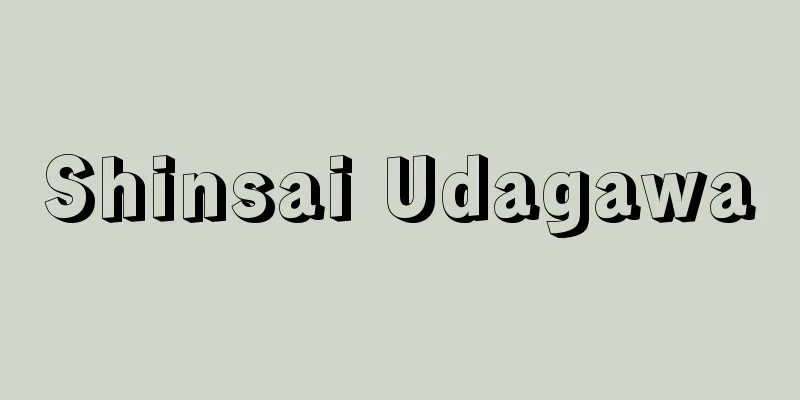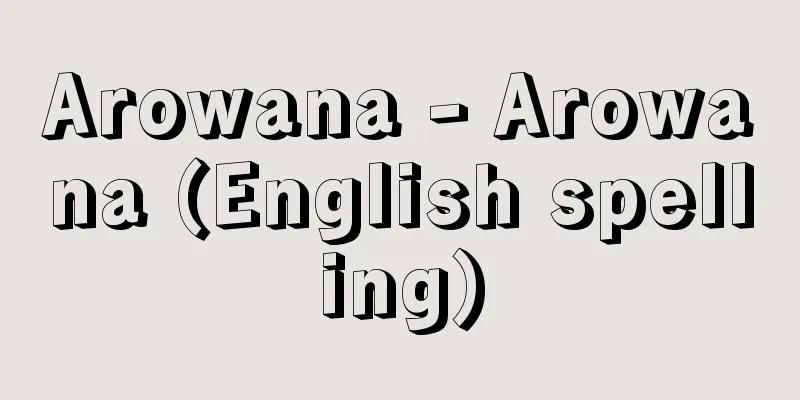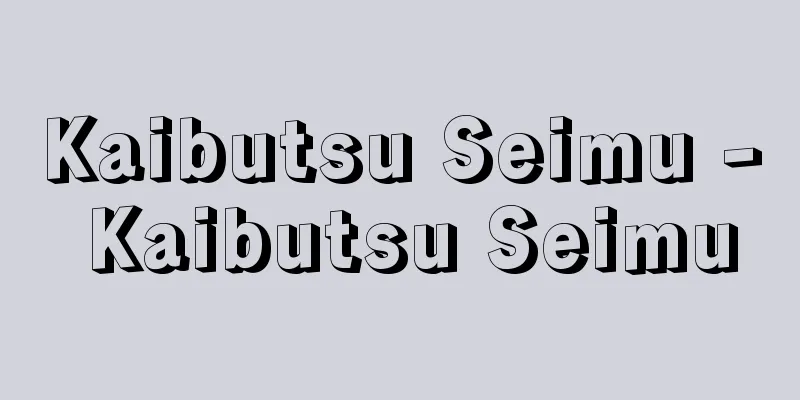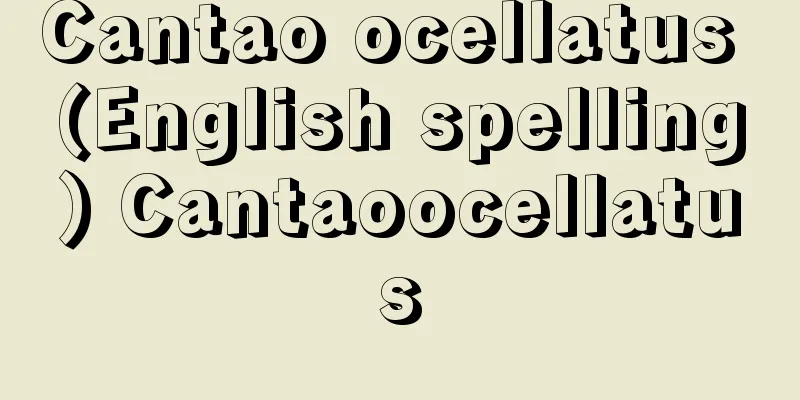Shinsai Udagawa

|
A Dutch medicine doctor of the late Edo period. A native of Ise. His real surname was Yasuoka, his given name was Genshin, and Shinsai was his pen name. He initially aspired to become a Chinese medicine doctor and went to Edo, but was pointed out by Udagawa Genzui and became his pupil, studying under Maeno Ryotaku and Otsuki Gentaku as well. His talent was recognised and he became the husband of Sugita Genpaku, but he was later divorced. After Genzui's death, he took over the Udagawa family on the advice of Inamura Sanpaku and became a doctor for the Tsuyama domain. He published three volumes of "Oranda Naikei Hanteiko" in 1805 (Bunka 2) and "Naisho Copperplate Drawings" in 1808, establishing the name Shinsai. In the preface, he invented new terms such as vein, chyle, mesentery, and pancreatic gland, and because it was written in simple, natural language, it was used until the early Meiji period. In 1813, he became the head of the Dutch Book Reconciliation Office, and for the next 17 years he worked on translating the Kosei Shinpen. He also worked on translating pharmacology books, publishing three volumes of the Oranda Yakukyo (Dutch Pharmacology Mirror) (1820), 36 volumes of the Ensei Iho Meibutsu Ko (Ensei Medical Specialties Study) (1822), and nine volumes of the same supplement (1834), listing the names of approximately 800 types of medicine. He had several hundred disciples, and he encouraged them to always consult books, learn the causes of all illnesses, and endeavor to treat them accordingly. His main disciples were Tsuboi Shindo, Iinuma Yokusai, Fujii Hōtei (1778-1845), Sato Nobuhiro, Ogata Kōan, Mitsukuri Genpo, Aoki Shuhitsu, and Totsuka Seikai. He retired in 1832 (Tenpo 3) and retired to Fukagawa. He died on December 4, Tempō 5. He was buried at Seigan-ji Temple in Asakusa, Tokyo, and later reburied at Tama Cemetery and Taian-ji Temple in Nishidera-cho, Tsuyama City. As he had no heir, he adopted Yoan, the son of Ezawa Yoju (1774-1838), a doctor of the Ogaki domain. [Tetsuo Suenaka] "Medical History Stories - From Sugita Genpaku to Fukuzawa Yukichi" by Fujino Tsunesaburo (1984, Saikon Publishing) [References] | | | Inamura| | | | | | | | Tsuboi| |Source: Shogakukan Encyclopedia Nipponica About Encyclopedia Nipponica Information | Legend |
|
江戸後期の蘭方医(らんぽうい)。伊勢(いせ)の人。本姓は安岡、名は玄真、榛斎は号。初め漢方医を志して江戸に出たが、宇田川玄随に指摘されて玄随の門に入り、前野良沢(りょうたく)、大槻玄沢(おおつきげんたく)にも師事。その才を見込まれ杉田玄白(げんぱく)の娘婿になったが、のちに離縁。玄随没後、稲村三伯(さんぱく)の勧めで宇田川家を継ぎ、津山藩医となった。1805年(文化2)『和蘭内景医範提綱』3巻、1808年『内象銅版図』を出版、榛斎の名を確立。前書では静血脈、乳糜(にゅうび)、腸間膜、膵腺(すいせん)などの新用語を創案、平易な書き下し文のためもあり明治初期まで利用された。1813年蘭書和解掛(わげがかり)となり、以降17年間『厚生新編』の訳に従事。また薬物学書の翻訳に努め、『和蘭薬鏡(おらんだやくきょう)』3巻(1820)、『遠西医方名物考(えんせいいほうめいぶつこう)』36巻(1822)、『同 補遺』9巻(1834)を刊行、約800種の薬物名をあげた。門下は数百名を数えたが、つねに本に就き変に応じて百病の因を知り治療に努めるように説いた。おもな門人に坪井信道(しんどう)、飯沼慾斎(よくさい)、藤井方亭(ほうてい)(1778―1845)、佐藤信淵(のぶひろ)、緒方洪庵(こうあん)、箕作阮甫(みつくりげんぽ)、青木周弼(しゅうひつ)、戸塚静海らがいた。1832年(天保3)致仕、深川に隠居。天保(てんぽう)5年12月4日没。東京浅草の誓願寺に葬られ、のちに多磨霊園、さらに津山市西寺町泰安寺に改葬された。嗣子(しし)がなく、大垣藩医江沢養樹(ようじゅ)(1774―1838)の子榕菴(ようあん)を養子とした。 [末中哲夫] 『藤野恒三郎著『医学史話――杉田玄白から福沢諭吉』(1984・菜根出版)』 [参照項目] | | | | | | | | | | | | |出典 小学館 日本大百科全書(ニッポニカ)日本大百科全書(ニッポニカ)について 情報 | 凡例 |
<<: Utagawa Toyokuni (first generation)
>>: In case of doubt, give the benefit of the doubt to the accused
Recommend
Pirate Blood
…From the 1930s to the 1950s, pirate films flouri...
Interest rate policy
It is a monetary policy tool in which the central...
Yakubinskii, LP (English spelling) YakubinskiiLP
…The Society for the Study of Poetic Language was...
Macula
The central part of the retina is the area where ...
Amazonas (state) (English spelling)
A state in northwest Brazil. With an area of 1,5...
Hans Walter Gruhle
1880‐1958 A German psychiatrist and one of the lea...
Honjibutsu - local Buddha
〘Noun〙 Buddha or Bodhisattva, the original form of...
long ton
…(2) In the imperial system, there are two types ...
Autumn larch - Autumn larch
A large perennial plant of the Ranunculaceae fami...
Peppermint oil (peppermint oil) - mint oil
The leaves and stems of the Mentha genus, a perenn...
The Tale of the Bamboo Cutter
A story from the Heian period. One volume. The Ta...
Vinylon - Biniron (English spelling) vinylon
A general name given to synthetic fibers made fro...
Marmota
…They are found all over the world except Austral...
thermometric titration
...The end point of a titration can also be deter...
"De la law" (English spelling)
…Mably, who dreamed of an idealistic equal societ...
![Tosa [city] - Tosa](/upload/images/67cc56c1133b5.webp)






![Chigasaki [city] - Chigasaki](/upload/images/67cc2c835aefd.webp)

